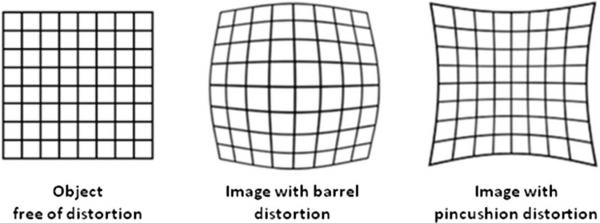What is Optical Aberrations?
This article mainly introduces the definition, categories and results of aberrations.
Introduction
An optical aberration is a natural distortion in the front wave or image formed by an optical element (medium), primarily a lens. These distortions include two groups:
• Chromatic aberrations [longitudinal and lateral (transverse)] and
• Monochromatic aberrations (Seidel and wave aberrations).
Two other groups of aberration should be noted:
• Surface and material aberrations, and
• Optical assembly aberrations, i.e., those formed by design and/or assembly mistakes, or a combination of all existing aberrations.
One of the major tasks of an optics designer is to eliminate or minimize any kind of existing or possible aberration to produce the required optical assembly with the best possible performance.
The longitudinal chromatic aberration occurs due to diffraction phenomenon. When white light travels along the optical axis and goes through two media (air and glass in the simplest case), different wavelengths of light are refracted by different amounts and to different directions. The blue light is refracted more strongly than the green light, and the green refracted more strongly than the red. Thus, the focus of each light lies at a different point along the optical axis in the longitudinal direction.
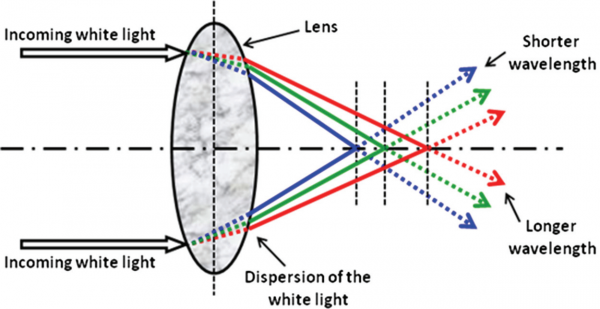
The lateral (transverse) chromatic aberration occurs due to the same diffraction phenomenon as the longitudinal chromatic aberration but
from a white ray light coming not along the axis but at an angle to it, refracted and focused at different positions along the same focal plane.
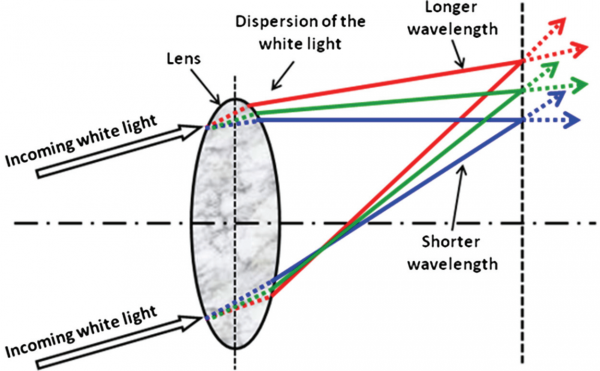
Monochromatic aberrations
Five monochromatic aberrations are created because of the nature of a lens and the behavior of monochromatic light passing through it:
• Spherical aberration,
• Coma,
• Astigmatism,
• Curvature of field, and
• Distortion.
Spherical aberration
Spherical aberration is an axial aberration that occurs due to the different directions of refraction of light rays when they strike and pass through a lens at a different height relative to the optical axis or when monochromatic light rays are reflected from a spherical mirror. Figures below illustrate the difference between the ideal and realistic behavior of light.
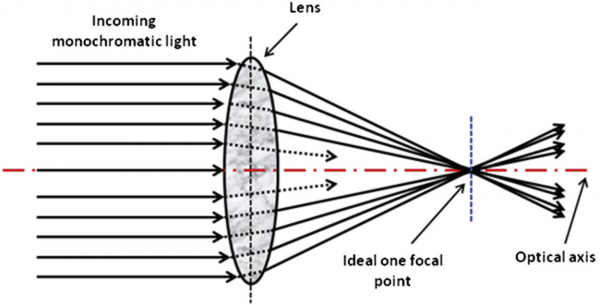
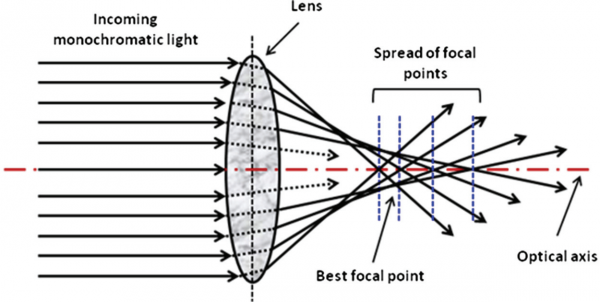
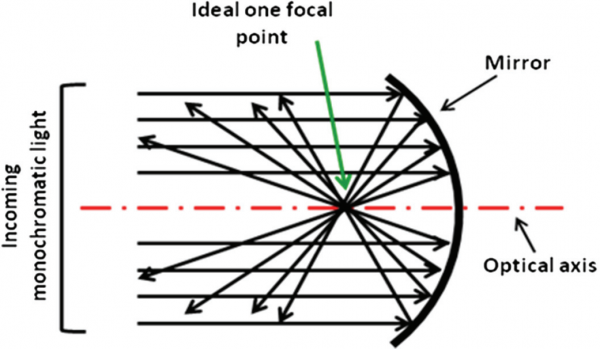
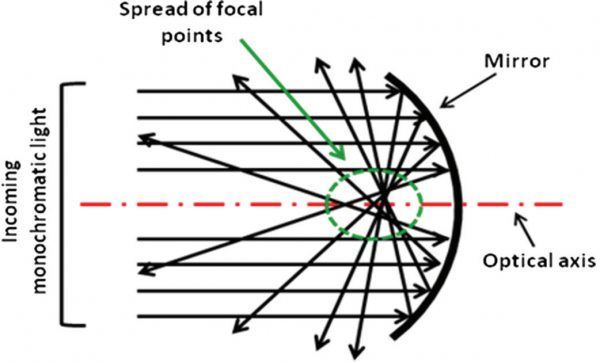
Coma
Coma is an optical aberration that occurs due to a tilted, incoming incident wavefront (with respect to the optical surface or the optical axis) that creates an image with a tail (coma) like a comet. A lens with considerable coma may produce a sharp image in the center of the field that becomes increasingly blurred toward the edges.
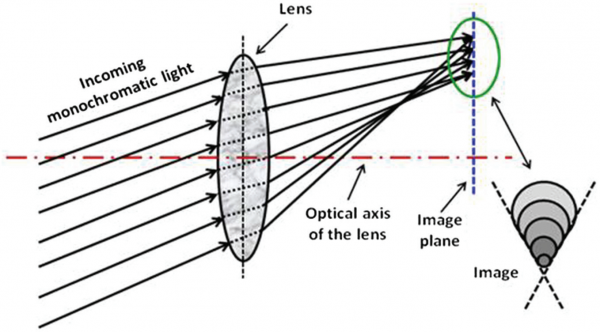
Astigmatism
Astigmatism is an aberration resulting of different curvatures in perpendicular planes. Rays propagate in two planes and are focused at different places on the principal axis of the ray. At intermediate points between the two focused points, rays combine to form a compromise image that sometimes looks like a small plus sign.
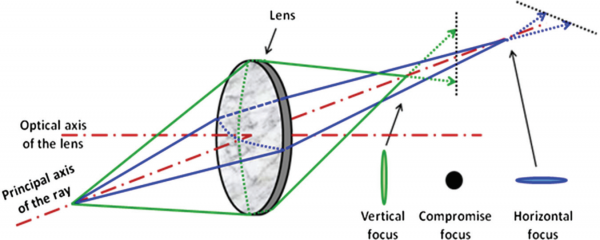
Curvature of field
Curvature of field is an aberration where the focused image is accepted on a curve surface. If the sharpness is set along the edges, the center of the image accepted on a flat detector surface will be blurry (not as sharp as the edges), and if the sharpness is set on the center, then the edges of the image accepted on a flat detector surface will be blurry. figure below depicts this behavior. This aberration phenomenon is produced for an off-axis beam only.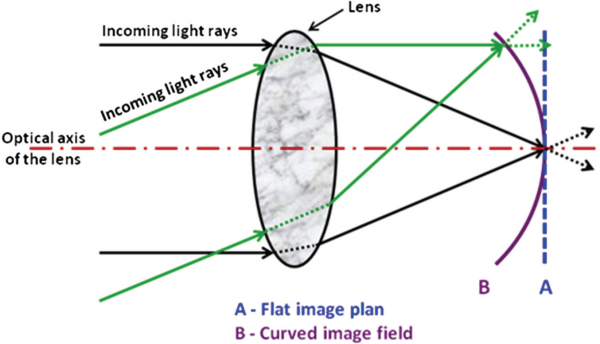
Distortion is an aberration that results from the difference in the magnification over the field of the lens. Because the focal lens varies over the image surface (transverse magnification), an image with different magnification areas is created (i.e., parts of the image are more magnified than others).
There are two types of distortion:
• Barrel distortion, where the magnification decreases with radial distance from the optical axis; and
• Pincushion distortion, where the magnification increases with radial distance from the optical axis.
